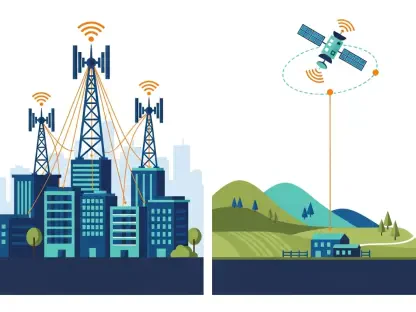In an increasingly interconnected world where public perception can change swiftly, strategic communication stands as a pillar for successful crisis management. A single misstep in communication can dismantle years of trust and goodwill built between companies and their stakeholders. The recently highlighted scenarios underline the essential nature of effective communication. In Bilbao, November 2024, a water supply cut exposed severe communication flaws, leaving the public in the dark and eroding trust in local institutions. The absence of timely notification systems further highlighted the issue. Conversely, in Castellón, May 2025, a car accident turned into a successful marketing opportunity, showcasing how innovative communication strategies can yield positive results and eventually enhance brand perception. Each example serves as a testament to how vital it is for companies to foster strategic communication, both in avoiding pitfalls and seizing opportunities.
Communication Pitfalls and Solutions
The water supply cut in Bilbao serves as a textbook example of communication breakdown in times of crisis. When residents awoke to find their faucets dry, they were left uninformed and understandably distraught. The lack of a structured communication plan meant that there were no systems in place to promptly inform or reassure the public. Such scenarios can quickly erode public trust, especially when stakeholders feel neglected or misled. The aftermath saw a diminished institutional reputation but also offered valuable lessons. In response, implementing an SMS alert system was a proactive measure to address any future disruptions. This solution underscores the criticality of having a robust plan in place. Companies must prioritize establishing clear communication channels and ensure that information reaches the intended audience swiftly. Training spokespersons who can communicate effectively, both emotionally and factually, is essential.
On the other hand, the creative approach taken in Castellón illustrates how innovative communication can turn potential crises into advantages. Following the unfortunate accident at a car dealership, the company’s team opted for a humorous marketing campaign that not only diffused potential negativity but also resonated with the public. This tactic served to humanize the brand, fostering relatability and empathy from its audience. Such strategic, agile responses speak to the potential of communication techniques that are not strictly reactionary but rather proactive. Establishing communication objectives allows organizations to navigate both routine and crisis situations with confidence. Evaluation and adaptation of these strategies are necessary to refine and hone them, ensuring continuous improvement and alignment with evolving stakeholder expectations.
Building Trust and Loyalty
The core lessons extracted from these contrasting case studies highlight the indisputable importance of trust, reliability, and empathy in corporate communications. An organization’s credibility is often measured by its ability to communicate sincerely and transparently, both essential elements during crises. Establishing a clear, consistent narrative allows companies to protect their reputations and fortify stakeholder relationships. Being proactive is as vital as being reactive. This point is accentuated by the fact that companies with preemptive plans in place generally experience less reputational damage.
Maintaining a crisis manual, continually training spokespersons, and utilizing appropriate communication channels are indispensable measures. Ensuring consistency in tone and message conveys steadiness, which reassures audiences and stakeholders alike. Organizations should also institute mechanisms for post-crisis evaluations. Surveys and analyses can offer insights into the efficacy of the communication process and highlight areas needing improvement. These measures enable companies to emerge stronger, maintaining loyalty through transparency and empathy. The past scenarios demonstrate how strategic communication not only mitigates crises but can enhance a brand’s image when executed judiciously.
Conclusion: Prioritizing Strategic Planning
The water cutoff in Bilbao epitomizes communication failures during crises. Residents, puzzled and alarmed by dry taps, faced a lack of information due to an absent communication strategy. Without a system to swiftly notify or reassure the public, trust deteriorates, especially when stakeholders feel sidelined or misled. The event hurt institutional credibility but provided crucial insights. Subsequently, an SMS alert system was launched to tackle any future issues and highlighted the necessity of robust communication plans. Companies should focus on creating clear communication channels, ensuring timely information delivery. Training spokespersons to express thoughts accurately and with empathy is vital.
Conversely, in Castellón, a car dealership cleverly flipped a mishap by using humor in their marketing campaign, defusing potential backlash and appealing to the public. This tactic humanized the brand, fostering connection and empathy. Such agile, strategic actions show the power of proactive communication. Setting communication goals helps organizations confidently manage crises and routine matters, necessitating continual strategy evaluation and adaptation to meet evolving stakeholder expectations.









